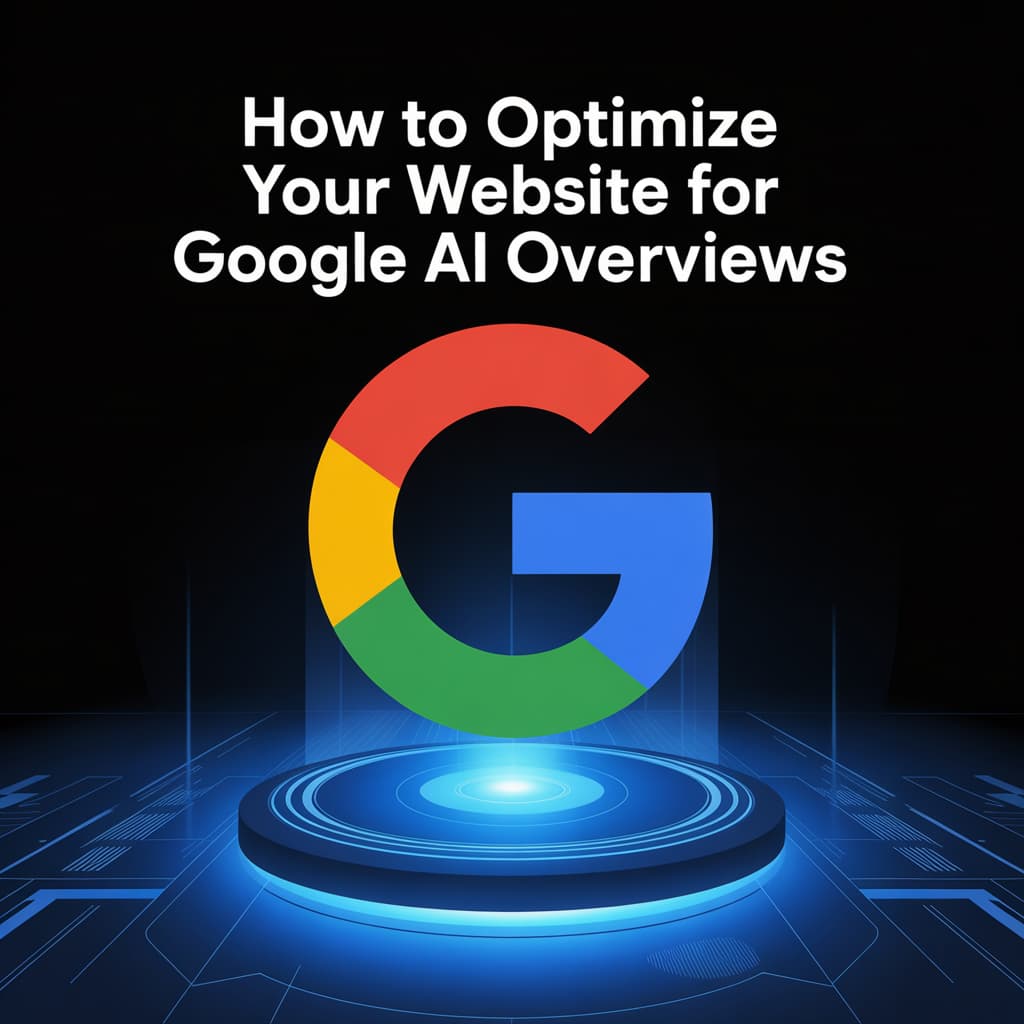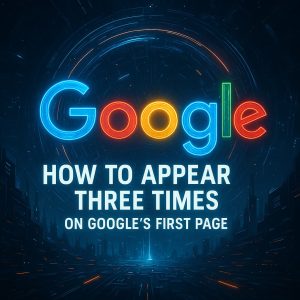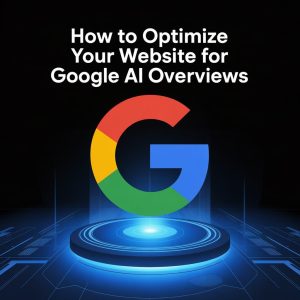Learn how to optimize for Google AI Overviews and boost your visibility across search results with proven SEO strategies.
Overview
Google’s AI Overviews represent the most significant transformation in search engine results pages since the introduction of featured snippets. These AI-generated summaries, which now appear in over 50% of all search results as of June 2025, are fundamentally changing how users discover and consume information online. For website owners, content creators, and digital marketers, understanding how to optimize for AI Overviews has become not just an opportunity, but a necessity for maintaining visibility in an increasingly competitive digital landscape.
The rapid adoption of AI Overviews has been nothing short of remarkable. According to Semrush’s comprehensive 2025 study, AI Overviews were triggered for only 6.49% of queries in January 2025, but this figure climbed to 13.14% by March 2025—representing a staggering 72% growth in just two months. This exponential growth trajectory suggests that AI Overviews will soon become the dominant format for information delivery in Google Search, making optimization strategies more critical than ever before.
Unlike traditional featured snippets that extract content from a single source, AI Overviews synthesize information from multiple trusted websites to provide comprehensive, AI-generated summaries. This fundamental difference means that the strategies for appearing in AI Overviews require a more nuanced approach than conventional SEO tactics. The implications extend far beyond simple visibility metrics—research indicates that keywords triggering AI Overviews can experience click-through rate declines of 15.49% on average, with some industries seeing organic traffic drops of 15-64%.
However, this shift also presents unprecedented opportunities for brands that adapt quickly. Google’s own data reveals that clicks from AI Overviews tend to be higher quality, with users spending more time on sites and showing greater engagement. This suggests that while the quantity of clicks may decrease, the quality and intent of traffic can actually improve for websites that successfully optimize for AI Overview inclusion.
Understanding Google AI Overviews: The Foundation of Modern Search
What Are AI Overviews and How Do They Work
Google AI Overviews are AI-generated summaries that appear prominently at the top of search results, powered by Google’s advanced Gemini language model. These overviews represent Google’s evolution from a traditional search engine into what industry experts call an “answer engine”—a platform that provides direct answers rather than simply directing users to external sources.
The technology behind AI Overviews is sophisticated, utilizing generative artificial intelligence that learns patterns and structures from vast amounts of training data to create contextually relevant responses. What makes AI Overviews particularly powerful is their ability to synthesize information from multiple authoritative sources simultaneously, creating comprehensive answers that would traditionally require users to visit several different websites.
This synthesis capability represents a fundamental shift in how search results are constructed. While featured snippets typically pull a specific paragraph or list from a single webpage, AI Overviews can combine insights from dozens of sources, creating entirely new content that addresses user queries more comprehensively than any individual source could alone. This approach allows Google to provide more nuanced, complete answers to complex questions that might have multiple facets or require interdisciplinary knowledge.
Rollout Strategy and Current Availability
The rollout strategy for AI Overviews has been deliberately methodical, following a pattern similar to previous Google features. Initially launched in Google’s Search Labs as an experimental feature called SGE (Search Generative Experience), AI Overviews were officially introduced to the public in the United States on May 14, 2024, with global expansion continuing throughout 2024 and into 2025. This gradual rollout has allowed Google to refine the technology while gathering user feedback and addressing potential issues.
Currently, AI Overviews are available to all users in multiple countries, territories, and languages, with availability continuing to expand. The feature cannot be disabled by users, as Google considers it a core search feature similar to knowledge panels. However, users can access the Web filter after performing a search to view only traditional text-based links without AI Overviews, though this requires an additional step that most users are unlikely to take.
Impact on User Behavior and Traffic Patterns
The impact on user behavior has been significant and somewhat counterintuitive. While initial concerns suggested that AI Overviews would dramatically increase zero-click searches, Semrush’s analysis of over 200,000 keywords revealed that zero-click rates actually declined slightly (from 38.1% to 36.2%) after AI Overviews were introduced for specific keywords. This finding challenges the assumption that AI-generated summaries automatically reduce website traffic, suggesting instead that the relationship between AI Overviews and user engagement is more complex than initially anticipated.
The Current AI Overview Landscape: Statistics and Trends
Exponential Growth and Query Type Expansion
Understanding the current state of AI Overviews requires examining both their prevalence and the types of queries they target. The data reveals clear patterns that can inform optimization strategies and help predict future developments in this rapidly evolving landscape.
The growth trajectory of AI Overviews has been exponential rather than linear. Semrush’s comprehensive analysis of over 10 million keywords shows that the percentage of queries triggering AI Overviews increased from 6.49% in January 2025 to 7.64% in February (an 18% increase), and then jumped dramatically to 13.14% by March 2025. This 72% month-over-month growth in March suggests that Google is rapidly expanding the feature’s reach across different query types and industries.
Even more telling is the expansion into different search intents. While informational queries continue to dominate AI Overview triggers at 88.1%, navigational queries have shown remarkable growth, doubling from 0.74% to 1.43% between January and March 2025. This expansion indicates that Google is becoming more confident in the technology’s ability to handle diverse query types beyond simple factual questions.
Industry Impact and Query Characteristics
Industry-specific data reveals which sectors are experiencing the most significant impact from AI Overviews. Science leads with a 22.27% increase in AI Overview share, followed closely by Health at 20.33%, People & Society at 18.83%, and Law & Government at 15.18%. These industries share common characteristics: they deal with complex, authoritative information that benefits from synthesis across multiple sources, and they represent areas where users seek comprehensive, trustworthy answers.
The characteristics of queries that trigger AI Overviews provide crucial insights for optimization strategies. Analysis of 10,000 terms that trigger AI Overviews reveals they tend to be long-tail, low-difficulty informational queries rather than high-volume transactional keywords. This pattern mirrors the early rollout of featured snippets, which began with fact-based queries before expanding into more complex or controversial topics.
For example, informational queries like “What is BMR” currently trigger AI Overviews, while commercial queries such as “Best protein powder” typically do not. This distinction suggests that Google is prioritizing queries where users seek educational content over those with clear commercial intent, at least in the current phase of the rollout.
Traffic Impact and Click-Through Rate Analysis
The impact on click-through rates and website traffic has been a primary concern for publishers and content creators. Research from multiple sources provides a nuanced picture of this impact. Amsive’s study found that keywords triggering AI Overviews experienced an average CTR decline of 15.49%, while other research suggests potential organic traffic drops ranging from 15% to 64% depending on industry and search type.
However, these statistics require careful interpretation. Ahrefs’ analysis found that AI Overviews decrease CTRs by 34.5% for top-ranking pages, but this data must be considered alongside Google’s assertion that clicks from AI Overviews tend to be higher quality, with users spending more time on sites and showing greater engagement. This suggests a trade-off between quantity and quality of traffic that may actually benefit websites in terms of conversion rates and user engagement metrics.
Pew Research’s study of user behavior provides additional context, finding that users who encountered an AI summary clicked on a traditional search result link in only 8% of all visits, compared to higher click rates when no AI summary was present. This data point has generated significant concern among publishers, but it’s important to note that this represents overall clicking behavior rather than the specific impact on websites that appear within AI Overviews themselves.
Zero-Click Behavior and Global Expansion
The zero-click behavior analysis reveals perhaps the most surprising finding in current AI Overview research. Despite widespread assumptions that AI-generated summaries would increase zero-click searches, Semrush’s same-keyword analysis found that zero-click rates actually decreased slightly after AI Overviews were introduced. This counterintuitive finding suggests that AI Overviews may actually encourage more exploration and clicking by providing users with better context about available information sources.
Regional and language expansion continues to accelerate, with AI Overviews now available in multiple countries and languages beyond the initial English-language rollout in the United States. This global expansion creates opportunities for international SEO strategies and suggests that optimization techniques developed for English-language content will likely apply to other markets as the feature continues its worldwide deployment.
Core Optimization Strategies for AI Overview Success
Optimizing for AI Overviews requires a fundamental shift from traditional SEO approaches that focus primarily on ranking individual pages for specific keywords. Instead, successful AI Overview optimization demands a holistic content strategy that emphasizes authority, comprehensiveness, and user value across interconnected topics and themes.
Strategy 1: Create Authoritative, Experience-Driven Content
The foundation of AI Overview optimization lies in creating content that demonstrates genuine expertise, experience, authoritativeness, and trustworthiness—Google’s E-E-A-T criteria. However, the application of E-E-A-T for AI Overviews goes beyond traditional SEO requirements, demanding content that can serve as a reliable source for AI synthesis across multiple related queries.
Google’s official guidance emphasizes focusing on “unique, non-commodity content that visitors from Search and your own readers will find helpful and satisfying.” This directive takes on heightened importance for AI Overviews because the AI system must evaluate content not just for individual query relevance, but for its potential contribution to comprehensive, multi-source answers.
Establishing expertise requires demonstrating deep knowledge through comprehensive coverage of topics rather than surface-level treatments. This means creating content that addresses not just the primary question users might ask, but also the follow-up questions and related concepts they’re likely to explore. For instance, an article about “sustainable marketing practices” should cover not only the basic definition and examples, but also implementation challenges, measurement metrics, industry-specific applications, and emerging trends.
Experience signals have become increasingly important as AI systems learn to distinguish between theoretical knowledge and practical, first-hand insights. Content that includes case studies, personal anecdotes, specific examples from real implementations, and lessons learned from actual practice tends to perform better in AI Overview selection. This experiential content provides the kind of nuanced, contextual information that AI systems can use to create more valuable and trustworthy summaries.
Authoritativeness in the AI Overview context extends beyond traditional author credentials to encompass the overall authority of the content ecosystem. This includes not only the expertise of individual authors but also the reputation of the publishing organization, the quality of editorial processes, and the consistency of high-quality content production over time. Websites that consistently publish authoritative content across related topics are more likely to be selected as sources for AI Overviews.
Trustworthiness signals have evolved to include factors that AI systems can evaluate programmatically. This includes citation practices, fact-checking processes, transparency about sources and methodologies, and alignment with established expert consensus in relevant fields. Content that includes proper citations, links to authoritative sources, and clear attribution of claims and statistics demonstrates the kind of reliability that AI systems prioritize for inclusion in overviews.
Strategy 2: Optimize for Topic Clusters Rather Than Individual Keywords
Traditional keyword-focused SEO strategies prove insufficient for AI Overview optimization because AI systems evaluate content within broader topical contexts rather than isolated keyword matches. This shift requires adopting a topic cluster approach that demonstrates comprehensive authority across interconnected subjects rather than targeting individual search terms.
Topic cluster optimization begins with identifying the core themes and subtopics within your area of expertise. Rather than creating separate, isolated pieces of content for related keywords, successful AI Overview optimization involves developing comprehensive content ecosystems that address all aspects of a particular topic area. This approach helps AI systems understand the depth and breadth of your expertise, making your content more likely to be selected for synthesis across multiple related queries.
The implementation of topic clusters requires careful planning and strategic internal linking. Each piece of content within a cluster should link to related pieces, creating a web of interconnected information that helps both users and AI systems navigate between related concepts. This internal linking structure serves as a signal to AI systems about the relationships between different pieces of content and the overall authority of your content ecosystem.
Content depth within topic clusters must go beyond surface-level coverage to address the nuanced questions and edge cases that users might encounter. This means anticipating not just the primary questions users ask about a topic, but also the secondary and tertiary questions that arise as they develop deeper understanding. AI systems favor content that can contribute to comprehensive answers across this spectrum of user needs.
The semantic relationships between topics within clusters require careful attention to ensure that content addresses not just explicit keyword matches but also the conceptual connections that AI systems use to understand topic relevance. This involves using related terms, synonyms, and conceptually connected phrases naturally throughout content, helping AI systems understand the full scope of topics covered.
Strategy 3: Implement Comprehensive Structured Data Strategies
Structured data implementation for AI Overview optimization extends far beyond basic schema markup to encompass comprehensive information architecture that helps AI systems understand and categorize content effectively. This strategic approach to structured data serves as a bridge between human-readable content and machine-interpretable information.
The foundation of effective structured data for AI Overviews lies in implementing schema markup that accurately reflects the content type, purpose, and relationships within your content ecosystem. This includes not only basic article schema but also more specific markup for FAQs, how-to guides, reviews, and other content types that commonly appear in AI Overviews. The key is ensuring that structured data accurately represents the visible content without attempting to manipulate or misrepresent the information provided.
Advanced structured data strategies involve implementing schema markup that helps AI systems understand the relationships between different pieces of content. This includes using schema properties that indicate related articles, prerequisite knowledge, and content hierarchies. Such markup helps AI systems understand how individual pieces of content fit into larger knowledge frameworks, making them more valuable for synthesis into comprehensive overviews.
Citation and reference markup represents a crucial but often overlooked aspect of structured data for AI Overviews. Implementing schema that clearly identifies sources, citations, and references helps AI systems understand the credibility and reliability of information, making content more likely to be selected for inclusion in overviews. This includes markup for academic citations, industry reports, expert quotes, and other authoritative sources.
Validation and testing of structured data implementation requires ongoing attention to ensure that markup remains accurate and effective as content evolves. Google’s structured data testing tools provide essential feedback for identifying and correcting markup issues, but successful AI Overview optimization requires going beyond basic validation to ensure that structured data effectively communicates the intended information architecture to AI systems.
Strategy 4: Create Snippet-Optimized Content Architecture
Content architecture for AI Overview optimization requires designing information presentation that facilitates easy extraction and synthesis by AI systems while maintaining readability and value for human users. This dual optimization challenge demands careful attention to content structure, formatting, and information hierarchy.
The foundation of snippet-optimized architecture lies in creating clear, concise answers to specific questions while providing sufficient context for AI systems to understand the broader implications and applications of the information. This means structuring content with clear headings that correspond to likely user questions, followed by comprehensive but concise answers that can stand alone while contributing to larger narratives.
Content designers must structure information to support both human comprehension and AI extraction. They should use heading structures that clearly show how different pieces of information relate to each other, include bullet points and numbered lists for steps or key points, and create clear transitions to signal when new concepts are introduced.
Answer formatting for AI Overview optimization requires balancing conciseness with comprehensiveness. AI systems favor content that provides clear, direct answers to specific questions while also offering enough context and detail to be genuinely useful. This often means providing a brief, direct answer followed by more detailed explanation, examples, and related information.
The integration of multimedia elements within snippet-optimized content architecture serves multiple purposes for AI Overview optimization. Images, videos, and infographics not only enhance user experience but also provide additional signals to AI systems about content quality and comprehensiveness. However, these elements must be properly integrated with descriptive alt text, captions, and surrounding context that helps AI systems understand their relevance and contribution to the overall content value.
Strategy 5: Build Strategic Link Authority and Trust Signals
Link building for AI Overview optimization requires a sophisticated approach that goes beyond traditional metrics like domain authority or page rank to focus on topical authority and trust signals that AI systems can evaluate and incorporate into their source selection algorithms. This evolution in link building strategy reflects the AI system’s need to assess not just the popularity of content, but its reliability and expertise within specific subject areas.
The foundation of effective link building for AI Overviews lies in earning citations and references from authoritative sources within your industry or topic area. These links serve as trust signals that help AI systems understand the credibility and reliability of your content. However, the quality and relevance of linking domains matter more than quantity, as AI systems can evaluate the topical authority of linking sites and weight their endorsements accordingly.
Internal linking strategies for AI Overview optimization must create clear pathways that help AI systems understand the relationships between different pieces of content within your site. This involves creating hub pages that serve as comprehensive resources on core topics, with strategic links to more detailed subtopic pages. The internal linking structure should mirror the logical flow of information that users would follow when exploring a topic in depth.
Citation practices within your content serve dual purposes for AI Overview optimization. First, they demonstrate the research depth and credibility of your content to AI systems. Second, they provide AI systems with additional authoritative sources that can be incorporated into comprehensive overviews. Proper citation practices include linking to original research, industry reports, expert statements, and other authoritative sources that support your content claims.
The evaluation of link quality for AI Overview purposes extends beyond traditional SEO metrics to include factors like topical relevance, content freshness, and source diversity. AI systems appear to favor content that draws from diverse, authoritative sources rather than relying on a narrow range of references. This suggests that successful AI Overview optimization requires building relationships and earning citations across the full spectrum of authoritative voices within your industry.
Strategy 6: Optimize for Multimodal Search Integration
The integration of multimedia elements into AI Overview optimization strategies reflects Google’s expanding capabilities in multimodal search, where users can combine text queries with images, voice commands, and other input methods. This evolution requires content creators to think beyond text-only optimization to create comprehensive multimedia experiences that can serve diverse user needs and search behaviors.
Image optimization for AI Overview inclusion involves more than traditional alt text and file naming conventions. AI systems can now analyze image content directly, making it crucial to include high-quality, relevant images that genuinely enhance and support the textual content. This includes using original images when possible, ensuring images are properly sized and optimized for fast loading, and providing comprehensive captions that explain the relationship between images and surrounding content.
Video content integration represents a significant opportunity for AI Overview optimization, particularly as Google expands its ability to analyze and extract information from video content. Videos that include clear spoken explanations, on-screen text, and comprehensive descriptions are more likely to be incorporated into AI Overviews. This requires attention to video SEO fundamentals like transcripts, closed captions, and descriptive titles and descriptions.
Voice search optimization for AI Overviews involves creating content that can effectively answer spoken queries, which tend to be longer and more conversational than typed searches. This means incorporating natural language patterns, question-and-answer formats, and conversational phrases that match how people actually speak when asking questions. Content optimized for voice search often performs well in AI Overviews because both applications favor natural, conversational content that directly addresses user questions.
The technical implementation of multimodal optimization requires attention to page loading speeds, mobile responsiveness, and accessibility features that ensure multimedia content can be effectively accessed and analyzed by AI systems across different devices and contexts. This includes implementing proper schema markup for multimedia content, ensuring fast loading times that don’t negatively impact user experience, and providing alternative formats for users with different accessibility needs.
Technical Implementation and Best Practices
Foundation Requirements for AI System Access
The technical foundation for AI Overview optimization extends beyond content creation to encompass website architecture, performance optimization, and technical SEO practices that facilitate AI system access and analysis of your content. These technical considerations often determine whether high-quality content can be effectively discovered and incorporated into AI Overviews.
Website Architecture and Crawlability
Ensuring that AI systems can effectively access and analyze your content requires implementing technical SEO best practices with particular attention to the needs of AI crawlers and analysis systems. This begins with fundamental crawlability requirements but extends to more sophisticated considerations about how AI systems navigate and understand website structure.
The foundation of AI-friendly website architecture lies in creating clear, logical site structures that help both users and AI systems understand the organization and hierarchy of your content. This includes implementing breadcrumb navigation, creating comprehensive XML sitemaps, and using URL structures that reflect content organization. AI systems rely on these structural signals to understand how different pieces of content relate to each other and to the overall authority of your site.
Optimizing page loading speed and performance has become increasingly critical for including AI Overview, as AI systems must efficiently access and analyze large amounts of content across the web. This requires implementing technical optimizations like image compression, code minification, content delivery network usage, and optimizing server response time. Pages that load slowly or present technical barriers to access are less likely to be included in AI Overview source selection.Mobile optimization represents a crucial technical requirement for achieving AI
Overview success, as an increasing percentage of searches occur on mobile devices, and Google’s mobile-first indexing approach means that mobile versions of pages primarily determine ranking and inclusion decisions. This requires implementing responsive design, ensuring mobile-friendly navigation, and making all content and functionality accessible on mobile devices.
The implementation of proper HTTP status codes and redirect structures helps AI systems understand content availability and authority. This includes using 301 redirects for permanently moved content, implementing proper 404 error handling, and ensuring that important content returns appropriate success codes. AI systems use these technical signals to evaluate content reliability and determine whether pages should be included in overview source selection.
Content Delivery and Performance Optimization
The technical delivery of content optimized for AI Overviews requires attention to performance metrics that affect both user experience and AI system access. This encompasses not only traditional page speed optimization but also considerations specific to how AI systems access and analyze content at scale.
Server response time optimization becomes particularly important for AI Overview inclusion because AI systems must efficiently access large numbers of pages to compile comprehensive overviews. This requires implementing server-side optimizations like caching strategies, database optimization, and content delivery network configuration that ensure consistent, fast response times even under high load conditions.
Content caching strategies for AI Overview optimization must balance the need for fresh, up-to-date content with the performance benefits of caching. This involves implementing intelligent caching that updates frequently for time-sensitive content while maintaining longer cache periods for evergreen content. AI systems favor content that is both fast-loading and current, making cache management a crucial technical consideration.
The implementation of structured data and schema markup requires technical precision to ensure that markup is properly formatted, validated, and accessible to AI systems. This includes using JSON-LD format for structured data when possible, implementing markup that accurately reflects page content, and regularly validating markup to ensure it remains error-free as content evolves.
Security and HTTPS implementation represent fundamental technical requirements for AI Overview inclusion, as AI systems prioritize secure, trustworthy sources. This requires implementing proper SSL certificates, ensuring all content is served over HTTPS, and maintaining security best practices that protect both user data and content integrity.
Monitoring and Analytics Implementation
Tracking the performance of AI Overview optimization efforts requires implementing analytics and monitoring systems that can capture both traditional SEO metrics and AI-specific performance indicators. This comprehensive monitoring approach enables data-driven optimization decisions and helps identify opportunities for improvement.
The implementation of AI Overview tracking requires using tools and platforms that can identify when your content appears in AI Overviews and measure the resulting traffic and engagement patterns. This includes using SEO tools like SEMrush that now track AI Overview visibility under SERP features, implementing Google Search Console monitoring for AI-related traffic patterns, and setting up custom analytics tracking for traffic that originates from AI Overview citations.
Performance monitoring for AI Overview optimization must track both traditional metrics like organic traffic and rankings, as well as newer metrics like AI Overview inclusion rates, citation frequency within overviews, and the quality of traffic from AI Overview sources. This requires implementing comprehensive analytics that can distinguish between different traffic sources and measure engagement patterns specific to AI Overview visitors.
The analysis of user behavior patterns from AI Overview traffic provides crucial insights for optimization refinement. This includes tracking metrics like time on site, bounce rates, conversion rates, and engagement patterns for users who arrive via AI Overview citations compared to traditional organic search results. These behavioral insights help determine whether AI Overview optimization efforts are attracting the right audience and achieving desired business outcomes.
Competitive monitoring for AI Overview performance involves tracking not only your own inclusion rates but also analyzing which competitors appear in AI Overviews for target topics and understanding the characteristics of content that consistently wins AI Overview inclusion. This competitive intelligence helps identify optimization opportunities and benchmark performance against industry leaders.
Industry-Specific Optimization Considerations
Understanding Industry-Specific Requirements
Different industries face unique challenges and opportunities in AI Overview optimization, reflecting the varying ways that AI systems evaluate and present information across different subject areas and user intents. Understanding these industry-specific considerations enables more targeted and effective optimization strategies.
Healthcare and Medical Content
Healthcare content faces particularly stringent requirements for AI Overview inclusion due to Google’s Your Money or Your Life (YMYL) content standards and the critical importance of accuracy in medical information. AI systems apply heightened scrutiny to healthcare content, requiring exceptional levels of expertise, authoritativeness, and trustworthiness.
Medical content optimization for AI Overviews requires demonstrating clear medical expertise through author credentials, institutional affiliations, and peer review processes. This includes prominently displaying author qualifications, linking to medical licenses or certifications, and ensuring that medical claims are supported by citations to peer-reviewed research or established medical authorities. AI systems appear to prioritize content that includes these credibility signals when selecting sources for health-related overviews.
The complexity of medical information requires careful attention to accuracy and nuance in content creation. AI systems favor medical content that acknowledges limitations, discusses potential risks or side effects, and avoids making definitive claims about treatment outcomes without appropriate qualifications. This balanced approach helps ensure that AI-generated summaries maintain the nuanced, cautious tone appropriate for medical information.
Regulatory compliance considerations for healthcare content extend beyond traditional medical advertising guidelines to encompass how information might be interpreted and presented by AI systems. This requires creating content that remains accurate and appropriate even when excerpted or synthesized with information from other sources, avoiding claims or statements that could be misleading when taken out of context.
Financial Services and Investment Content
Financial content optimization for AI Overviews must navigate the intersection of YMYL content requirements with the rapidly changing nature of financial markets and regulations. AI systems evaluating financial content prioritize sources that demonstrate both expertise and current, accurate information.
Investment and financial advice content requires particular attention to disclaimers, risk disclosures, and the temporal nature of financial information. AI systems appear to favor financial content that includes appropriate disclaimers about the risks of investment decisions, acknowledges the potential for market volatility, and provides clear dates for time-sensitive information like market data or regulatory changes.
The regulatory environment for financial content creates additional considerations for AI Overview optimization, as content must remain compliant with financial advertising regulations even when excerpted or synthesized by AI systems. This requires creating content that maintains appropriate regulatory compliance regardless of how it might be presented or combined with other sources in AI-generated summaries.
Expertise demonstration in financial content involves not only author credentials but also track records, institutional affiliations, and recognition within the financial industry. AI systems appear to evaluate these credibility signals when selecting sources for financial overviews, making it crucial to prominently display relevant qualifications and expertise indicators.
E-commerce and Product Information
E-commerce content optimization for AI Overviews requires balancing promotional intent with the informational focus that AI systems typically favor. This challenge involves creating content that provides genuine value to users while supporting commercial objectives.
Product information optimization for AI Overview inclusion focuses on creating comprehensive, objective content that helps users make informed decisions rather than purely promotional material. This includes detailed product specifications, comparison information, use cases, and honest assessments of product strengths and limitations. AI systems appear to favor product content that provides balanced, informative perspectives rather than purely promotional messaging.
Review and rating integration represents a crucial component of e-commerce AI Overview optimization, as AI systems often incorporate user feedback and ratings into product-related overviews. This requires implementing proper schema markup for reviews, encouraging authentic customer feedback, and ensuring that review systems maintain integrity and authenticity.
The seasonal and temporal nature of e-commerce content creates unique challenges for AI Overview optimization, as product availability, pricing, and promotions change frequently. This requires implementing content management systems that can maintain current information while preserving the evergreen educational content that AI systems favor for overview inclusion.
Future Trends and Evolving Strategies
Anticipating Technology Evolution
The rapid evolution of AI Overview technology and user behavior patterns suggests that optimization strategies must remain flexible and adaptive to emerging trends and capabilities. Understanding these future directions enables proactive optimization that anticipates rather than reacts to changes in AI search technology.
Expanding Query Types and Complexity
The expansion of AI Overviews into more complex query types represents a significant trend that will reshape optimization strategies over the coming years. Current data shows AI Overviews beginning to appear for navigational and transactional queries, not just the informational queries that dominated early implementations.
Commercial query integration suggests that AI Overviews will increasingly include product recommendations, service comparisons, and purchase-related information. This evolution will require e-commerce and service providers to optimize content that can effectively contribute to commercial AI Overviews while maintaining the informational value that AI systems prioritize.
The increasing sophistication of AI systems in handling controversial or nuanced topics suggests that future AI Overviews will tackle more complex subjects that require balanced perspectives and careful source selection. This evolution will reward content creators who can provide thoughtful, well-researched perspectives on complex issues while acknowledging different viewpoints and potential limitations.
Multi-step and procedural query handling represents another area of expansion, as AI systems become more capable of synthesizing information across multiple steps or processes. This trend favors content that provides comprehensive, step-by-step guidance while also addressing potential variations, exceptions, and troubleshooting scenarios.
Personalization and Context Integration
The integration of personalization factors into AI Overview generation represents a significant future trend that will require new optimization approaches. As AI systems become more sophisticated in understanding user context, location, search history, and preferences, optimization strategies must account for these personalization factors.
Geographic and local optimization for AI Overviews will become increasingly important as AI systems integrate location-based factors into overview generation. This requires creating content that addresses local variations, regional differences, and location-specific considerations while maintaining broad applicability for users in different geographic contexts.
User intent sophistication suggests that future AI Overviews will better understand the specific context and goals behind user queries, requiring content optimization that addresses not just explicit questions but also implicit user needs and follow-up questions. This evolution favors comprehensive content that anticipates and addresses the full spectrum of user intentions related to specific topics.
The integration of real-time data and current events into AI Overviews represents another personalization trend that will affect optimization strategies. This requires creating content frameworks that can incorporate current information while maintaining evergreen value, and implementing technical systems that can update content efficiently as new information becomes available.
Measuring Success and ROI in AI Overview Optimization
Establishing Comprehensive Measurement Frameworks
Developing effective measurement frameworks for AI Overview optimization requires establishing metrics that capture both the direct impact of AI Overview inclusion and the broader effects on brand visibility, traffic quality, and business outcomes. Traditional SEO metrics provide only part of the picture for AI Overview performance evaluation.
Key Performance Indicators for AI Overview Success
AI Overview inclusion rate represents the foundational metric for measuring optimization success, tracking the percentage of target queries for which your content appears in AI Overviews. This metric requires consistent monitoring across relevant keyword sets and should be tracked over time to identify trends and optimization opportunities.
Citation frequency within AI Overviews provides insight into how often your content is referenced when AI Overviews are generated for relevant topics. This metric goes beyond simple inclusion to measure the authority and reliability that AI systems assign to your content across different subject areas.
Traffic quality metrics from AI Overview sources often prove more valuable than simple traffic volume measurements. Users who arrive via AI Overview citations typically demonstrate higher engagement, longer session durations, and better conversion rates, making quality metrics crucial for ROI evaluation.
Brand mention and authority metrics track how AI Overview inclusion affects overall brand visibility and recognition within your industry. This includes monitoring brand mentions in AI-generated content, tracking branded search volume changes, and measuring improvements in brand authority signals.
Long-term Strategic Impact Assessment
The strategic value of AI Overview optimization extends beyond immediate traffic and visibility metrics to encompass long-term brand building, market positioning, and competitive advantage development. These strategic impacts often provide the most significant ROI from AI Overview optimization efforts.
Market positioning benefits from consistent AI Overview inclusion include establishing thought leadership, building industry authority, and creating competitive differentiation. These benefits compound over time as AI systems increasingly recognize your content as authoritative and reliable for relevant topics.
Customer acquisition cost improvements often result from AI Overview optimization as higher-quality traffic from AI sources typically converts at better rates than traditional organic traffic. This improvement in traffic quality can significantly impact overall marketing ROI and customer lifetime value metrics.
Competitive advantage development through AI Overview optimization creates sustainable benefits as early adopters establish authority signals that become increasingly difficult for competitors to replicate. This first-mover advantage in AI optimization can provide lasting benefits in search visibility and market positioning.
Conclusion and Actionable Recommendations
The Strategic Imperative for AI Overview Optimization
The transformation of search through AI Overviews represents both a significant challenge and an unprecedented opportunity for content creators, marketers, and business owners. Success in this new landscape requires abandoning traditional keyword-focused approaches in favor of comprehensive, authority-building strategies that prioritize user value and topical expertise.
The evidence clearly demonstrates that AI Overviews are not a temporary feature but a fundamental shift in how information is discovered and consumed online. With AI Overviews now appearing in over 50% of search results and growing rapidly across all query types, optimization for this format has become essential for maintaining search visibility and competitive positioning.
The most successful AI Overview optimization strategies share common characteristics: they prioritize comprehensive, authoritative content over keyword targeting; they build topical authority through interconnected content ecosystems; they implement technical best practices that facilitate AI system access and analysis; and they focus on long-term value creation rather than short-term ranking manipulation.
Implementation Roadmap and Future Outlook
Organizations beginning their AI Overview optimization journey should conduct a comprehensive content audit to identify existing assets that they can enhance for AI Overview inclusion, develop topic cluster strategies that demonstrate their comprehensive expertise in core business areas, implement technical optimizations to improve AI system access and analysis capabilities, and establish measurement frameworks to track both AI Overview inclusion and business impact metrics.
The future of search will increasingly favor organizations that can demonstrate genuine expertise, provide comprehensive value to users, and adapt quickly to evolving AI capabilities. By implementing the strategies outlined in this guide and maintaining a commitment to continuous optimization and adaptation, organizations can position themselves for success in the AI-driven search landscape while building sustainable competitive advantages that extend far beyond search visibility alone.
The investment in AI Overview optimization represents not just an SEO tactic but a fundamental business strategy for thriving in an increasingly AI-mediated digital environment. Organizations that embrace this transformation and implement comprehensive optimization strategies will find themselves well-positioned to capture the opportunities that emerge as AI continues to reshape how information is discovered, consumed, and acted upon online.
Contact Brain Buzz Marketing today to elevate your brand and achieve your goals!
A: Google’s Gemini language model powers AI Overviews, which generate summaries that appear at the top of search results. Unlike featured snippets that pull content from a single source, AI Overviews combine information from multiple trusted websites to create original, comprehensive summaries. They now appear in over 50% of search results, and users cannot disable them.
Q: How can I optimize my content to appear in Google AI Overviews?
A: Focus on creating authoritative, experience-driven content that demonstrates E-E-A-T (Experience, Expertise, Authoritativeness, Trustworthiness). Optimize for topic clusters rather than individual keywords, implement comprehensive structured data, create snippet-friendly content architecture, and build strategic link authority. Ensure your website has excellent technical performance and crawlability for AI systems.
Q: Do AI Overviews hurt website traffic and click-through rates?
A: Research shows mixed results. While some studies indicate CTR declines of 15-34% for certain keywords, Google reports that clicks from AI Overviews tend to be higher quality with better engagement. Surprisingly, Semrush’s analysis found zero-click rates actually decreased slightly after AI Overviews were introduced, suggesting they may encourage more exploration rather than reduce clicks.
Q: What types of queries currently trigger AI Overviews?
A: AI Overviews primarily trigger for informational queries (88.1%), particularly long-tail, low-difficulty questions. They’re most common in Science, Health, People & Society, and Law & Government industries. Commercial queries like “best protein powder” typically don’t trigger AI Overviews yet, while informational queries like “What is BMR” do.
Q: How do I measure success in AI Overview optimization?
A: Track AI Overview inclusion rates for target queries, citation frequency within overviews, and traffic quality metrics from AI sources. Use tools like SEMrush to monitor AI Overview visibility under SERP features. Focus on engagement metrics like time on site and conversion rates rather than just traffic volume, as AI Overview traffic tends to be higher quality.
Q: What technical requirements are needed for AI Overview inclusion?
A: Ensure your website meets Google’s technical requirements: fast loading speeds, mobile optimization, HTTPS security, proper crawlability, and clean site architecture. Implement structured data markup accurately, use clear URL structures, and maintain good server response times. AI systems must be able to efficiently access and analyze your content at scale.









